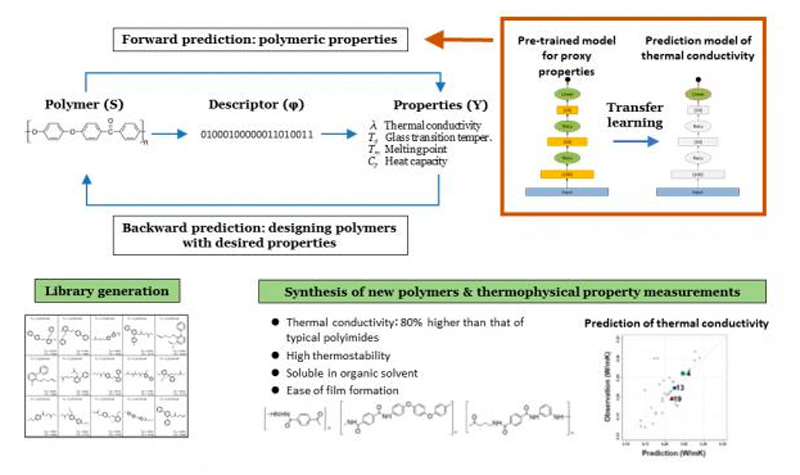
The initial positions of the atoms in this computer model of a solid-oxide fuel cell were based on observations of the actual atomic configuration using electron microscopy. Simulations using this model revealed a previously unreported reaction (red path) in which an oxygen molecule from the yttria-stabilized zirconia layer (layer of red and light blue balls) moves through the bulk nickel layer (dark blue balls) before forming OH on the nickel surface.

The ML workflow consists of two different steps of prediction; the forward and backward predictions. The objective of the forward prediction is to create a set of prediction models that describe various polymeric properties (e.g., thermal conductivity, glass transition temperature) as a function of chemical structures in the constitutional repeat units.